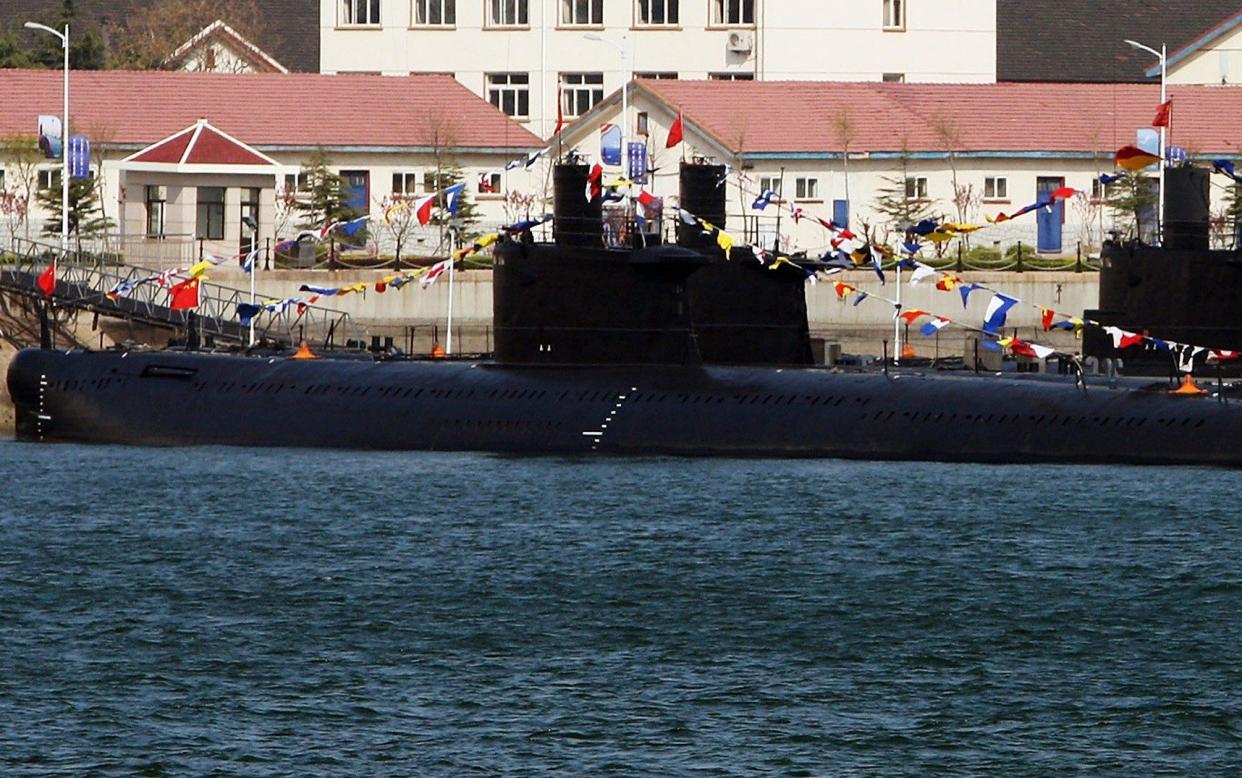China’s submarine forces are flexing their muscles ahead of a clash with the US

In a rare display of its undersea firepower, the Chinese navy recently sank one of its own warships – a decommissioned landing vessel – using a powerful submarine-launched torpedo.
The same kind of torpedo could pose a grave danger to US Navy aircraft carriers.
The sinking exercise, or SINKEX, involved an ex-Chinese navy Type 074 landing ship and an unspecified submarine from the navy’s northern theater command. The Chinese navy released a video of the SINKEX to commemorate the 70th anniversary of its submarine force on June 16.
“Our combat capabilities are stronger and our combat sea area is wider,” the Chinese navy crowed.
In the video, a torpedo explodes underneath the 190-foot Type 074’s stern, lifting the uncrewed vessel out of the water and possibly breaking its keel. No ship survives that kind of strike.
The location of the strike, and the visible wake behind the landing ship, implies the torpedo was a wake-homer. That is, a torpedo that senses a ship’s turbulent wake and follows it – right up the ship’s stern.
Not all torpedoes are wake-homers. But for certain kinds of targets, wake-homers are ideal. “A salvo of this kind of weapon is a carrier-killer,” according to the Australian Naval Institute.
We don’t know exactly what model of torpedo the Chinese submarine used to sink that old landing ship. However it was clearly a heavyweight-class weapon shot from a submarine, rather than a lightweight torpedo of the sort used by surface ships and aircraft against subs. The most modern Chinese heavy torpedo, the 533-millimeter-diameter Yu-6, may have wake-homing capability. The Yu-6 is roughly equivalent to the US Navy’s main heavyweight torpedo, the Mark 48. The Chinese weapon may even be a copy of a Mark 48 that Chinese fishermen recovered decades ago.
A Yu-6 probably ranges as far as 28 miles at a top speed of 65 knots. If it really is a copy of the Mark 48, its warhead might weigh more than 600 pounds.
Heavyweight torpedoes like the Yu-6 and the Mark 48 are powerful weapons, but they’re still not as imposing as the biggest Russian torpedo, the Type 65. That Soviet-vintage weapon is 650 millimeters in diameter and packs a massive 1,200-pound warhead. It ranges 60 miles at a top speed of 50 knots.
The Soviet navy developed the Type 65 specifically for sinking very large ships, such as American carriers. A malfunctioning Type 65 with volatile hydrogen peroxide fuel exploded aboard the Russian submarine Kursk in 2000, sinking the vessel and killing all 118 crew. The Russian navy has since abandoned peroxide fuel and uses different torpedoes for new subs.
But even smaller wake-homing heavyweights are extremely dangerous.
“The long range of some of these torpedoes greatly opens up the aperture of engagement zones for prowling submarines,” the Australian Naval Institute explains. “For an area where a known amphibious operation is underway, sending these weapons into that area keeps the launching submarine relatively out of harm’s way while putting amphibious vessels at great risk.”
That has huge implications for any US and allied effort to land troops and equipment as part of a wider effort to reinforce Taiwan during any future Chinese attack on the island country. The Chinese navy maintains one of the world’s most powerful submarine forces, with six nuclear-powered attack submarines and more than 40 diesel-electric subs.
In wartime, the nuclear-powered attack subs would probably prowl deep, distant waters while, closer to shore, the diesel subs engage enemy ships in shallower waters.
But the Americans and their allies have submarines and wake-homing torpedoes, too – and more of them than the Chinese have. US and Philippine forces conducted their own SINKEX in May. Another American-led SINKEX this month sank a decommissioned US Navy amphibious ship. The USN has more than fifty nuclear attack subs, all of them more sophisticated than China’s handful.
Chinese submarines may well be able to threaten US aircraft carriers – but Chinese submarine captains will be well aware that if there’s a US carrier, there’s a US nuclear attack sub somewhere not far away.
China’s submarine force is then, as it boasts, growing in reach and capability. But it has some way to go before it can match that of the USA.

 Yahoo News
Yahoo News 
